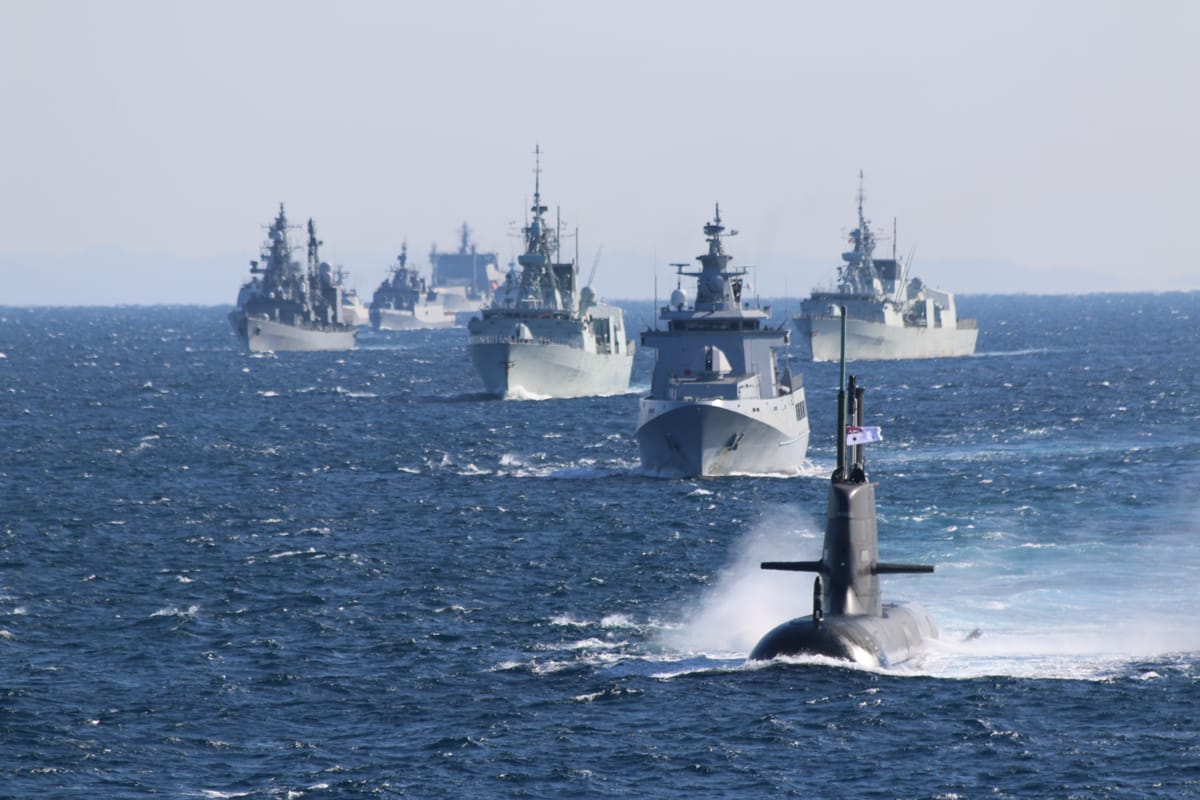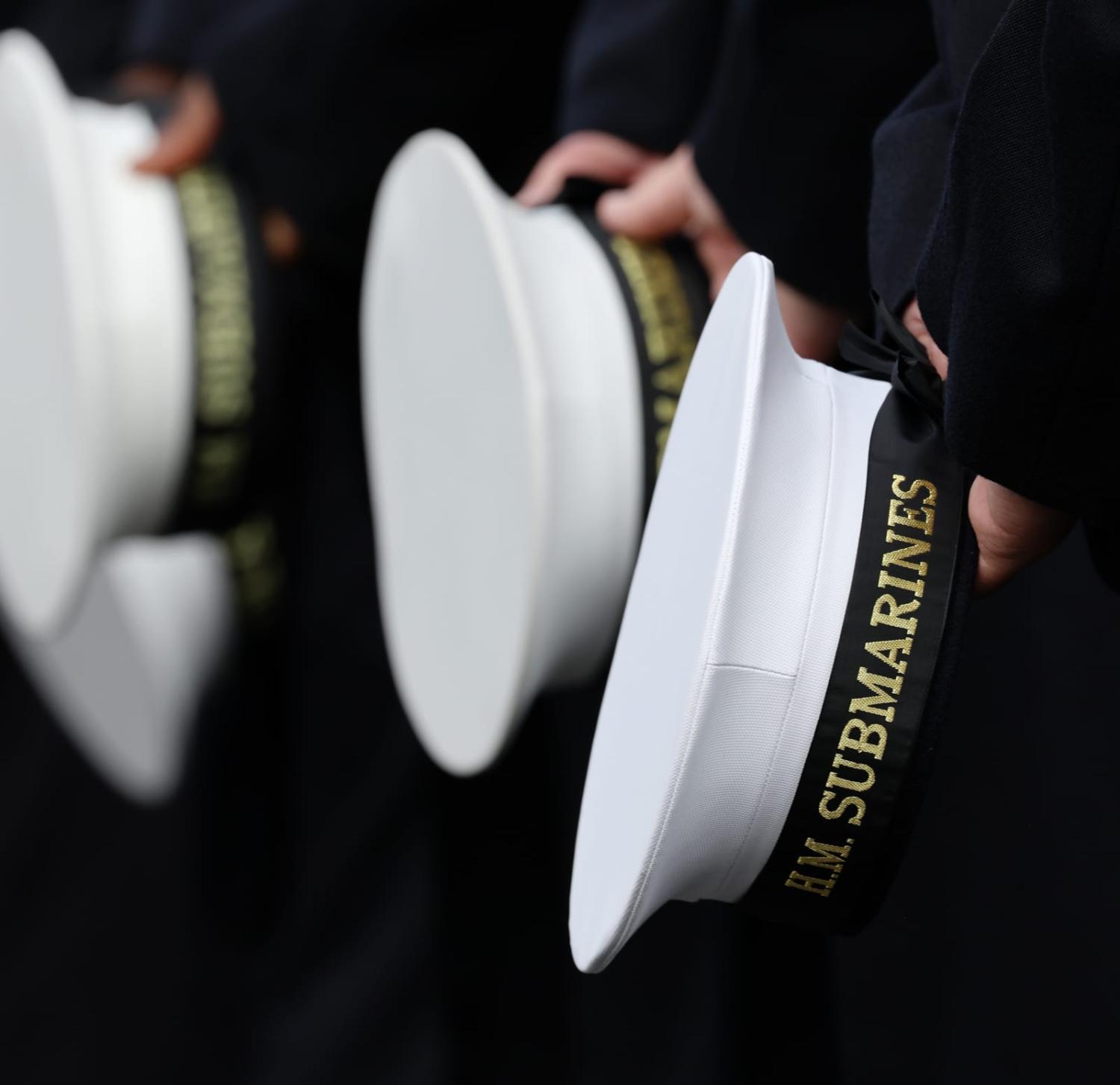When the long-anticipated AUKUS announcement is made in San Diego next week, the specifics of the “optimal pathway” for Australia’s future nuclear-powered submarines – which design, who will build them, when we get them and how much will they cost – will all be revealed. (Hopefully.) Such unknowns, important as they are, have been subjected to frenzied media speculation in recent days, to which this article does not propose to add.
Instead, I recently had an illuminating conversation with David Oliver in Washington, DC. A retired Rear Admiral in the US Navy, Oliver served aboard both diesel and nuclear-powered submarines – commanding the latter – and was later a political appointee across multiple US administrations. He is also author of many books including on the “father of the US nuclear navy” Hyman Rickover to most recently defence reform.
My principal question was to ask him what are the big issues still beneath the surface of the AUKUS debate?
In case the ultimate point of this capability is being missed, Oliver is emphatic: “Nuclear powered submarines will give Australia invulnerability. There is no nation or system that can prevent a determined attack by a nuclear submarine,” he says.
Avoiding detection – a key factor for abandoning the French-designed Attack Class – will move to the next level, especially for potential operation in waters closer to mainland China. As Oliver puts it:
Nuclear submarines have such inherent advantages, in that the ocean is so noisy and layered that sounds pursue odd paths. Then there is the fact that a competently driven boat can cause the problem to reset faster than computers can track and analyse.
Making the transition from diesel-electric – which Australia has operated since HMAS AE1 and AE2 more than a century ago – to nuclear-propulsion is a step Oliver has personally made. While the increased cost per boat is widely appreciated, the cost of attracting and retaining crew might be more than expected.
“You are going to want to sell many facets of the program to get and keep sufficient quality people,” he says. “But we finally accepted that it took money. Submariners needed to be paid more, because if they are the ones you want, they can be successful in many fields that pay more.
“At the same time, I believe you attract and keep young people by giving them lots of responsibility and having them face the physical and mental challenges of the deep. Some will say that nuclear-powered submarines are more comfortable [typically more space and artificially produced oxygen and water] but I believe few of these high performers care much about their bunks.”
Besides the attractions of pay and challenging work, Oliver says there is at least one motivation in common with the surface fleet: port visits. (Australia’s Collins Class are routine visitors to places such as Singapore and Guam, but also occasionally locations such as Noumea and Brunei.) “We screwed this up early in our program, but then finally realised the basic fact that people join the Navy to see the world,” he says.
“If you look at where a US nuclear submarine goes, it is completely dependent upon safety studies. You will find that lots of port visits can still be conducted by using a pier that is not ‘downtown’ per se. It will be workable for Australia too.”
With the phrases “nuclear mindset” and “nuclear stewardship” recently entering the Australian defence lexicon, Oliver emphasises that the shift in safety culture is the greatest intangible challenge and cannot be underestimated.
“You are going to need a different view of quality, errors and responsibility. It is why Hyman Rickover when putting the entire Navy through the trauma of changing from diesel to nuclear, he personally controlled every officer who entered and every officer who became an engineer or commanding officer.
“No one goes home to the wrong house after work, even when they have a cold or are distracted. Why should Australia accept any less for nuclear personnel at work?
“One mistake, depending on its egregiousness, might be grounds for termination from our program. Several errors always were. Your personnel system has to be prepared to handle this.”

In part, this change in mindset and skills will occur through what is known as “cross-decking” personnel for training – essentially allowing foreign submariners to serve on boats, a practice less rare than most people think.
“On my first ballistic missile submarine (SSBN), we took the man who was going to command the first United Kingdom SSBN on a patrol. Under another special arrangement I put US submariners on Japanese boats,” he says.
“I don’t see a problem cross-decking between US, Australia, the UK and I would include Canada. I think our basic tenets are the same and we are working from a very common purpose.”
Looking beyond nuclear-powered submarines, few have asked whether Australia should follow the US into other nuclear-powered naval vessels. Probably not, in Oliver’s view.
“I long ago realised that when air was freely available on the surface of the ocean, the cost of nuclear power would never be competitive. We found that nuclear power adds about 30-40 per cent to the initial cost. Therefore, as long as oil tends to average less than about US$120 a barrel, the initial nuclear power cost overwhelms the analysis.
“However, by the time we realised this, we had already sold the concept of nuclear aircraft carriers, so they have continued. But you will note that we did away with the nuclear-powered cruisers in the 1990s, very early in their life.”
Another feature of nuclear-powered submarines hiding in plain sight: they are not exposed to refined petroleum supply chains, which, for the ADF, is true of essentially every other vehicle and vessel.
“Fuel logistics was a major consideration for our entire Navy,” says Oliver, “especially during the 60s and 70s, and we were debating going fully nuclear. Eventually we decided that we already had a global fuel system, and some control over the price of oil.” Australia, he points out will always have access to US Navy fuel infrastructure in the Pacific.
Oliver is rare among former submariners in speaking publicly, albeit carefully. He says that the lack of general awareness of submarine operations and capabilities – even within the surface navy and defence communities, let alone the public – can cause problems. How should Australia build the “social license” for this secretive but very expensive capability?
“Pick the right people to serve and then focus on stories about how good, hard-working, unique and Australian they are,” he says, “and leave what they are doing to everyone’s imagination.”

